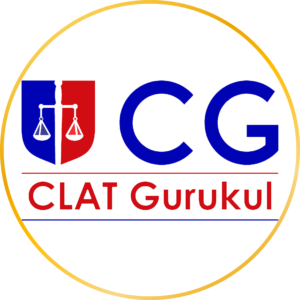
Why in News
The first phase of the Genome India Project (GIP) — India’s ambitious initiative to map the genetic diversity of its population — has been completed. Genetic data of over 10,000 individuals from 83 population groups has been catalogued and is now available for use. This data is expected to significantly boost research in healthcare, evolution, and personalized medicine in India.
Introduction
The Genome India Project (GIP) was launched to decode the genetic blueprint of the Indian population — one of the most genetically diverse populations in the world. This project aims to:
- Improve our understanding of genetic diversity.
- Aid in the development of personalized healthcare.
- Contribute to the evolutionary history of the Indian population.
- Build a foundation for future biomedical research.
Initiated in 2020 under the guidance of the Department of Biotechnology and coordinated by the Indian Institute of Science (IISc), Bengaluru, GIP is similar in scope to global genome mapping projects like the Human Genome Project.
Key Points from the Article
- Completion of First Phase
- The first leg of GIP has been completed.
- 10,000 genome sequences from 83 population groups have been documented.
- These include a wide representation from across India’s diverse ethnic, linguistic, and geographical groups.
- Preliminary results are published in Nature Genetics; full results expected next year.
- Scientific Collaborators
- The project involved 20 academic and research institutions.
- Over 100 scientists contributed to sequencing and analysis.
- Purpose and Application
- The primary goal is healthcare application:
- Early detection of genetic disorders.
- Personalized medicine (tailoring treatment to an individual’s genetic makeup).
- Development of population-specific drugs.
- Better understanding of disease predispositions.
- Understanding Genetic Sequences
- The genome is the complete set of DNA in a person.
- Each DNA strand has ~3 billion base pairs consisting of four nucleotides: A (Adenine), T (Thymine), C (Cytosine), G (Guanine).
- Humans share 99.9% of the same DNA, but a 0.1% variation accounts for diversity.
- Around 3-4 million unique variations (mutations) make each genome distinct.
- Role of Population Diversity
- Closed/isolated populations tend to have less genetic diversity.
- Heterogeneous or mixed populations show greater diversity, helpful in tracing diseases.
- Germline sequences (inherited from parents) help in tracing ancestry and disease inheritance.
- Benefits in Medicine
- Can assist in developing tailor-made treatments rather than one-size-fits-all.
- Helps identify mutations responsible for inherited disorders.
- Enables prediction of disease susceptibility in individuals and entire communities.
- Population Evolution & Migration
- Germline sequencing reveals migration patterns and ancestral lineages.
- Helps determine how genetic traits evolved with environmental changes.
- Can explain why certain populations have higher disease prevalence or resistance.
- Example: High prevalence of diabetes in some Indian tribes could be traced genetically.
- Social and Scientific Importance
- Helps resolve anthropological questions: Who are we? Where did we come from?
- Provides insights into human evolution, especially in a genetically rich region like India.
- Supports development of public health policies, especially for rare genetic conditions found in India.
- Policy and Ethical Implications
- Findings can guide government health interventions.
- Can shape policy for rare diseases, genetic counseling, and preventive healthcare.
- Ethical issues around data usage and privacy are critical and must be regulated.
Explanation of Key Terms (Note for CLAT Aspirants)
Term | Explanation |
Genome | The complete set of DNA (genetic material) in a cell, including all of its genes. |
Germline | Genetic material inherited from parents — helps trace ancestry and predict genetic diseases. |
Mutation | A change in the DNA sequence; can be beneficial, harmful, or neutral. |
Personalized Medicine | Medical treatment based on individual genetic profiles. |
Genetic Variation | The difference in DNA among individuals or populations. |
Ancestry | One’s genetic lineage or heritage. |
Population Group | A group of individuals who share common ancestry, location, or social structure. |
Nucleotides (A, T, C, G) | The basic building blocks of DNA. Their sequence determines genetic traits. |
Why This Matters for CLAT Aspirants
- This topic is highly relevant to the Current Affairs and General Knowledge section of CLAT.
- It can be used in comprehension-based passages or Legal Reasoning (e.g., privacy issues in genome mapping).
- It relates to:
- Science and Technology (innovations in genetic research).
- Public Health and Policy (personalized treatment, preventive health).
- Ethics and Law (data privacy, consent, bioethics).
- Questions may also connect this topic to Constitutional Rights (Article 21 – Right to Privacy).
Conclusion
The Genome India Project is a landmark scientific initiative that brings together India’s scientific expertise and diversity to create a database that will benefit medicine, evolution studies, and public policy. Its results can reshape how India addresses health challenges, especially those rooted in genetics. For CLAT aspirants, this is a goldmine topic covering science, legal ethics, current affairs, and constitutional connections — all of which are tested in the exam.






